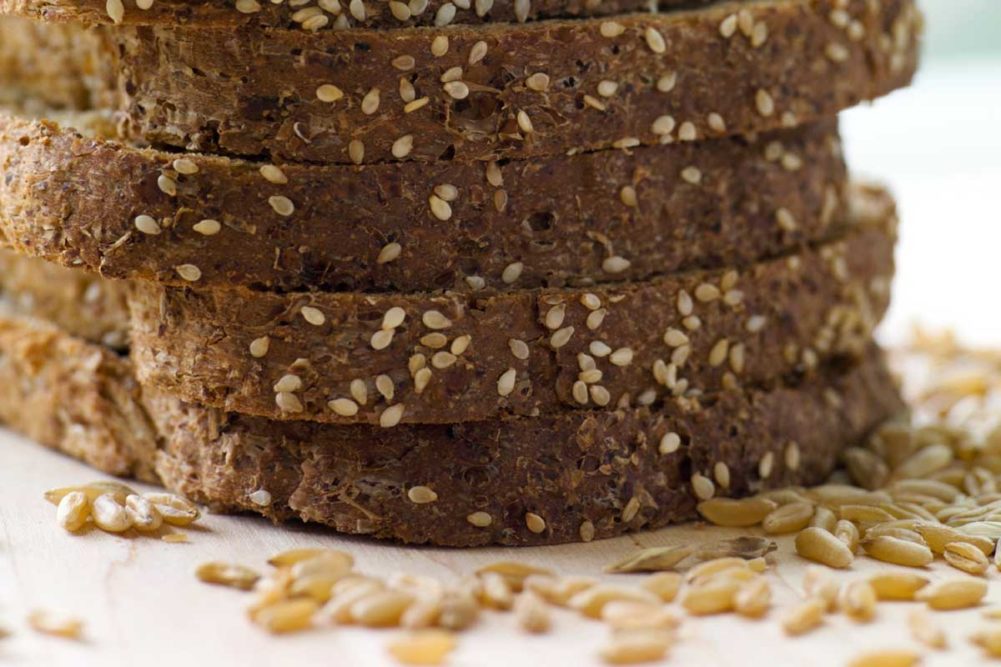Front-of-package claims such as “good source” or “excellent source” of protein depend upon the per cent daily value listed on the Nutrition Facts Label. Foods making a “good source” claim need to provide 10% of the daily value, and those with an “excellent source” claim need to deliver 20%. Only certain kinds of protein contribute to that number. Only complete, or “quality,” proteins — those containing all nine essential amino acids at the appropriate levels — contribute to the per cent daily value of protein listing.
“The biggest thing when talking about achieving a protein claim is the difference between total protein and quality protein,” said Matt Gennrich, senior food scientist, Cargill. “Total protein is the full amount of protein nutritionally in a product.”
For example, a bread product may have an impressive amount of total protein, but any incomplete protein will not count toward making a claim.
“Even if a product has 10 grams of total protein, enough to qualify for ‘excellent source’ if it was all quality protein, when we calculate the per cent daily value for the Nutrition Facts Panel, we can only count the quality protein,” Mr. Gennrich explained. “In this example, if the product contains 5 grams of quality protein, it would only qualify for 10% daily value claim, or ‘good source of protein’ claim.”
A protein’s quality is determined by its protein digestibility-corrected amino acid score (PDCAAS), which compares the concentration of amino acids against the standard amino acid profile.
“The score is based on the amino acid requirements of humans and their ability to digest it,” said Ricardo Rodriguez, marketing manager, confectionery and bakery, Ingredion. “All proteins have different amino acid profiles, and some may be more deficient in one versus another.”
Soy, dairy and egg proteins are all complete or quality protein. These sources contain all nine of the essential amino acids necessary for the human body. Because these contribute to the per cent daily value, they help formulators hit the minimum for front-of-pack claims quickly.
“A dairy protein is a complete protein, so you can use less of it to get where you need to,” said Marissa Stubbs, account manager, bakery, Agropur. “If you’re using other incomplete proteins, you have to add more to get the grams, but you’re not going to get that per cent daily value you need.”
To avoid allergens or control costs when using incomplete proteins, formulators can blend different sources to make up deficits and hit those per cent daily values. Wheat, for example, is a natural source of protein for baked goods as it typically makes up the bulk of the formulation in the flour. However, when wheat is used alone, it is an incomplete protein due to being low in lysine.
“To get those higher protein claims, you’ll have to substitute or augment the wheat that’s inherently there with another protein source,” Mr. Gennrich explained.
In light of this, it’s important that bakers wanting to make a claim understand the makeup of the different sources. For example, pea protein is high in lysine, making it a natural counterpart to balance wheat’s deficiency. While amaranth and quinoa are complete proteins, most other cereal grains are low in lysine like wheat. Potato protein is low in methionine and isoleucine and can be combined with wheat or other cereal grains to fill in the gaps.
“Soy and pea proteins offer high-protein quality, functionality and textural benefits, but are often blended with ancient grains or legumes to achieve a more well-rounded nutritional profile,” said Jacquelyn Schuh, marketing product director, alternative proteins, ADM. “Soy is an excellent high-quality protein with a PDCAAS score of one, but if soy isn’t the desired protein, different ones can be blended to achieve a better PDCAAS score than just one plant protein alone.”
Blends also enable bakers to use less protein to reach a claim, which helps reduce any negative effects on the dough or finished product.
“Also by blending and creating a complete protein, you can add less into your formulation to achieve your claim level, which helps bakers during processing,” Mr. Rodriguez said.
The more protein added to a formulation, the more impact the ingredient will have on final product characteristics.
This article is an excerpt from the February 2020 issue of Baking & Snack. To read the entire feature on protein, click here.






